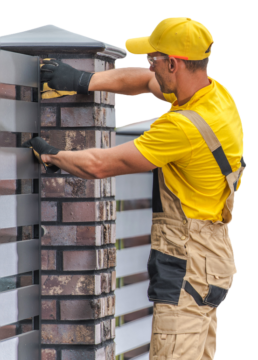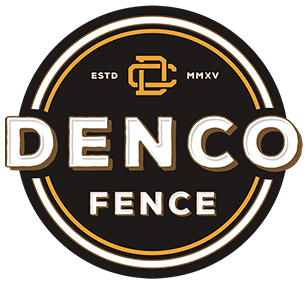Family pets are typically adored by their family members. Many pet owners decide to install a pet fence outdoors. This project can help pet owners create an ideal fence that will help contain pets to the safe, fenced-in area. However, there are a few things to consider before making a final fence material and style decision.
Consider the Type of Pet That You Own First
Prior to selecting your fence needed to keep your pet safe and sound, it is crucial to consider the type of pet that you own first according to experienced fence experts familiar with this fence need.
Some questions to ask prior to choosing a pet fence include:
- What breed is your pet? Usually related to dogs
- How large will your pet grow?
- How big is your property where fence will be installed?
- Does Your dog bark a lot when outdoors?
- What weather does your region have?
- How much can you pay for a fence?
- What aesthetic do you desire in a fence?
Make Sure That Your Fence Is High Enough
Smaller and medium sized dogs will usually require a fence that is 4 feet high, while larger dog breeds may be able to jump even a 6-foot-high fence depending on the dog’s specific breed, personality, overall health, agility, age and temperament. Of course, there are always exceptions to this rule.
Many Pets Can Climb Over Certain Fences
Curious pets can often climb over certain fence types. In addition, some pets can squeeze through tiny openings along the fence and/or go under the fence bottom. Chain link fences are popular fence choices, but many dogs, cats and other pets can get their paws into the spaces allowing them to escape. It should also be noted that nearby birds, wildlife and roaming pets in the area may also be able to get into your yard despite a fence.
Types of Pet Fences Available Today
There are several fence styles and material choices on the marketplace these days. Each fence has its own unique benefits and potential issues when using the fence to keep pets inside your yard.
Vinyl
Vinyl fences are terrific options for a pet fence. This material choice is almost worry and maintenance free. Choose a strong vinyl for heavier and larger dogs. Other benefits related to vinyl fences include low cost, easy-to-maintain, attractive design options along with multiple size and height selections.
A vinyl pet fence is moisture repellent, so the fence material will not rust or breakdown. Vinyl fences block the view providing privacy. If there are no spaces, the vinyl partitions may block desired airflow.
Wrought Iron
This durable and elegant fence material offers a stylish method to contain your yard. When treated with moisture repellant coating, wrought iron could be an excellent fence for larger pets and those that are well-trained. The price on these fences varies but is generally higher than some of the other fence materials.
Other Metal Fence Materials
Aluminum fences are lighter weight and can be perfect for smaller dog breeds. Stainless steel and combination material fences, like chain link and aluminum or mesh with stainless steel, are other fence options to keep in mind.
Chain Link
Chain link is easy to install, doesn’t restrict airflow or view and can be used on a wide variety of terrain. Always select a fence that has been treated using a water repellant and/or UV ray protective finish. Do remember that cats and some dogs can climb these fences in many cases. Also, a hyperactive or very territorial dog may begin barking at every little movement he sees through the openings.
No Dig Dog Fence
Fences that are located near bushes, trees and other plant life often cause a problem with curious pets that may try to chew these items or dig them up. One simple solution is to install a no dig dog fence. This requires pouring concrete along the fence line underground. This can help prevent pets from digging down under the fence.
Wooden Fence Ideas for Pets
Wooden fences are often preferred for fences intended to keep pets inside their yards. This fence material choice is generally affordable, but a wooden fence does require more upkeep and attention. Some dogs may be able to chew away wood fencing materials especially near the ground.
This area will need reinforcement to keep smaller pets from harming themselves trying to squeeze through fence openings while also providing a barrier of protection from wandering cats, dogs and other local creatures seeking to get inside your yard.
Wooden fences can be found in lattice work, picket style, ranch-style logs and various other patterns and designs.
Concrete Wall Used as a Fence
Concrete walls, natural stone barriers and other materials can often be used to create an effective and exceptionally durable pet fence.
Combination Materials for Pet Fences
PVC pipe blended with mesh, chain link or plastic are just some of the many combination material fences that pet owners can use to make a pet fence.
Use these guidelines when trying to pick the right pet fence for your specific enclosure needs.
Consider How Much Privacy You Need in a Fence
Some dogs become extremely aggressive or anxious when seeing everything that goes on beyond their chain link or other open-weave fence style. Vinyl or wooden panels, or partial privacy fence selections, can block out these disturbing scenes from your sensitive pet.
Make Sure You Know Where Your Property Boundary Lines Are
Be sure that you know and can prove where your exact property boundary lines are prior to any work on your land including building or installing a fence. Some communities have precise rules and regulations that need to be adhered to as well.
Decide How Much Maintenance & Upkeep You Are Willing to Do
Wooden fences require more upkeep over time. Vinyl fences and many coated metal fences are much easier to care for and often stand up better when exposed to harsh weather conditions and other outside elements like dirt, debris, sun and smog among others.
Consider a Portable Fence Enclosure or Exercise Yard for Smaller Pets
Many pet owners take their furry friends with them as they travel. Sometimes, having a portable fence enclosure can be a huge convenience. This is especially true for smaller or mid-sized dogs and cats. A portable fence can help keep your pet safe while still being able to give your pet outdoor exercise without the usual fears this entails in a new environment.
Some Final Thoughts Before Selecting a Pet Fence Type
- Be considerate of neighbors
- Do you want a gate included?
- Are there any HOA or local fence restrictions?
- Do you have the know-how and tools to install a fence?
Get in touch with the skilled and friendly professionals at Denco Fence Company by phone or view the company’s stellar website for more information about pet fences and other fencing news. Access an estimate anytime day or night online.

Need an expert opinion? Talk to our experts today!
When you talk to our experts at Denco Fence Company, we’ll help you compare fence styles, share design ideas, and answer any questions along the way. If you’re looking to build or repair a fence that you and your neighbors are going to love, get a free estimate and let us help bring your project to life.

